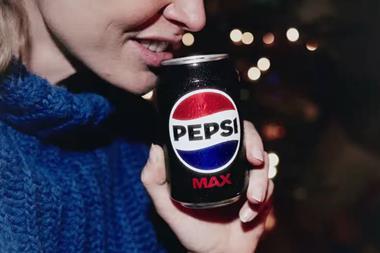Sainsbury's fortunes have seemed rather like a runaway trolley over the last few years, complete with wobbly wheels. After years of growing market share, it began haemorrhaging customers and profits while arch rivals Tesco and Asda continued their inexorable rise to the top of analysts' "buy" lists.
But with Sir Peter Davis now firmly in charge, the wheels have at least been greased and the wayward trolley has slowed to a reasonable pace.
After a number of downbeat financial announcements, this week's results weren't as truly terrible as Sainsbury's competitors might have liked.
Indeed, despite the fact that underlying group pre-tax profit slumped to £549m (down from £580m last year), the chain revealed a 21% jump in second half operating profits in its supermarket business, which it reckons is a sure indication of a halt in the company's decline.
And shoppers, who had seemingly defected to other stores and reduced their spending, also appear to have returned to the fold and topped up their baskets.
Sales are more buoyant up 5.9% to £18.4bn from £17.4bn in 2000 and customer numbers have leapt an impressive 6% in the second half of the year. Like for like sales growth, meanwhile, is a much improved 2.3% and a meaty 4.8% in the last quarter while the chain's operating margin also improved from 3.5% in the first half to 3.8% in the second half.
There really does appear to have been a significant, if limited, turnaround in Sainsbury's fortunes, although it obviously doesn't all hinge on getting more shoppers through newly refitted doors. Improving efficiencies is paramount to Sainsbury's recovery, a move which should in turn lead to an increase in operating margins.
This is the crux of Sir Peter's three-year recovery plan which he announced last October. And one which seems that bit closer to being achievable. He is confident of being on track to deliver his goal of achieving operating margins comparable with the industry leaders at the end of the three years, along with delivering £600m per annum of cost efficiencies by then, kicking off with £150m in the next financial year.
Judging by past experience, it looks as if this confidence is justified. The former chief executive of life insurance and pension company Prudential took over from Dino Adriano last March with the aim of making up ground lost to Tesco and Asda. During his time at the Pru, Sir Peter was instrumental in the creation and successful launch of UK internet-based bank Egg. By popular consent, he revitalised the company and left on a high.
But he is no retail novice, having worked at Sainsbury between 1976 and 1986, first as marketing director, then as assistant managing director. No-one baulked then, when he rejoined on a salary of £750,000 a year, with a bonus of up to 50% and performance-related options that are worth four times his pay.
With the voices of critics reverberating around the corridors of Stamford Street, mocking the chain's ill-fated Value To Shout About campaign, and doubting whether Sir Peter could really make life taste better', he very matter-of-factly set about turning the business around.
Sainsbury bosses admitted radical changes were needed because of the "increasing pressure and pace of change in retailing", and at the time of his appointment the chain cited pressure on gross margins as a big factor for its faltering profits.
The cost of price campaigns had sent pre-tax profit down to £352m in the six months to October 1999 and just a few months before Sainsbury had reported a 17.6% fall in profit as the price war cut into its margins.
And this time last year, profit at Sainsbury had dropped sharply from £756m to £580m a fall of 23.2% with like for like sales up a paltry 0.3%.
Then Sir Peter said the firm had to concentrate "on arresting the decline in Sainsbury's supermarkets" and "re-establishing ourselves as the UK's favourite food retailer by making the Sainsbury's experience special again for customers and colleagues".
Even by last July, he pointed to early signs that the changes were enticing shoppers back by reducing store clutter. And last August the chain unveiled its new look store in London's Cromwell Road admired by shoppers and design consultants alike.
At the time, Sir Peter bullishly insisted that the chain would retain its number two position, as long as Asda didn't make an acquisition in the UK.
He admitted Sainsbury needed new and modernised depots as well as better lines of communication because its bill for getting goods from the factory on to the shelf was higher than some of its peers'. He set himself the three-year target to modernise the distribution system and promised to speed up the home delivery service and improve the supply chain.
Since his arrival, Sir Peter has embarked on a streamlining initiative, including cutting hundreds of jobs at head office and a change of office for many sections, which have all been implemented in a bid to cut costs. He shows no signs of slowing down and admits candidly: "I've never worked so hard in my life!"
He has also not been afraid to make fairly radical changes at the chain. Last June he pulled Sainsbury out of the race to become the UK's top supermarket, aiming to take on the quality end of the market rather than compete with Tesco and Asda on price.
And only last month, the chain pulled the plug on its 100 Egyptian stores after just two years, incurring losses of more than £100m. In 1999, the retailer had paid £100m for an 80% share of local retailer Egyptian Distribution Group, but within a year Sainsbury said it was planning to "dilute" its share after incurring operating losses of £10m.
Sir Peter admitted that the decision to try Egypt taken by predecessor Adriano was a result of going in "too far, too fast".
Other expansion which was rapidly scaled back was Adriano's plan to open 200 Local stores over the next three years. Sir Peter is still betting on further expansion, however, and plans to move its store refurbishment programme up a gear to include up to 130 more stores in the next financial year.
Last year 14 new supermarkets and 13 Locals were opened and next year 11 supermarkets and 14 Locals are planned. Stores are also being refurbished and in the last year, 34 were extended and 16 were refurbished.
This seems to have gone some way to increasing sales, with the 34 stores achieving sales uplifts of 23%.
Sir Peter now talks in terms of "regaining a stronger sense of purpose and direction" along with "a stronger balance sheet and greater financial flexibility" as a result of offloading Homebase and the Egyptian business.
His aims now are to invest in the distribution network and open a totally new set of depots, change the computer systems and bring all stores up to a common standard. But he is far from complacent about the efforts made so far. "I don't want people thinking that because we've made a start, it's all been achieved. We've got a very big programme ahead."
He adds: "In the short term our food offer is demonstrably better and our stores' levels of customer service and product availability is improving. There is a lot of work still to be done but in the longer-term I am confident that we will have even better ranges, availability and stores to meet our customers' needs."
Another million customers joining the Sainsbury family bear testament to this extra attention shopper numbers have jumped from 9.8 million last year to 10.8 million which Sir Peter says are both new and lapsed customers.
"The figures are higher than we've ever had before and that's due to us cleaning out clutter in stores, improving the fresh food offer and allowing a lot more money for extra people on the tills. We want to get to the position so that there's only ever at the most one person ahead of you at the till. Most stores are already achieving that.We've also stepped up promotional activity and people are responding to that."
Getting across a stronger brand image is also on track, he says, and that the Jamie Oliver adverts popular across ages, classes and sexes will continue to drive home Sainsbury's passion for food. "We want to give our competitors a run for their money on food."
And along with happier customers, staff morale throughout the company is on the rise, according to Sir Peter, who admits that most realise the chain couldn't continue as it had and are now keen to help progress its strategy of concentrating on quality fresh food.
On the technology side, Sir Peter wants to speed up the roll-out of Sainsbury's to You, with national coverage now extending to more than 50%. He hopes a fresh strategy with a strong streak of e-commerce can revive the multiple which has been perceived as being less innovative than its competitors.
He says the company can achieve nationwide coverage in the near future, with a combination of store picking and added picking centres.
Internationally, Shaw's in the US is still showing a healthy profit with net margin up 4.2% last year.
However, Sir Peter says other investments overseas are unlikely. "I'd rather put money into expanding in the US than look at other markets at the moment. Our priority is the UK and we now have the cash to invest in that following the sale of Homebase."
His sentiments are broadly echoed by the City which has been buoyed by the sales boost. And although most analysts agree Sainsbury will never overtake Tesco in terms of market share something with which even Sir Peter would concur most reckon it should steadily build on its position.
Most commend the move to drive out costs, and believe that the chief executive is on the right track, but say the chain still has a long way to go and that results will be slow in coming through.
One comments: "The sales line has started moving far better than anyone expected and some of the scepticism has disappeared. He's investing in product development and on-shelf availability but this is at a margin cost."
Criticisms, however, include the continued lack of pharmacies (although Sir Peter claims to be addressing this) and poor customer service, despite the fact that customers are being won back. Another adds: "Service is the key now it's still not as good as it should be."
A briefing from Schroder Salomon Smith Barney is even more cautious. It says the new management team is superior to the old one and that action has been taken to improve store operations. But it adds: "It is now over a year since Sir Peter Davis took up his role and Sainsbury's sales still lag behind the major competition. Although it can improve the profitability on its existing sales with its price proposition, we are unconvinced that it can win back significant market share."
Apart from the financial pundits, Sainsbury has been much maligned in the past for its confused brand image. Eighteen months ago, brand consultants complained that shoppers were unsure what the chain stood for and who it was trying to attract.
Now they, too, agree the new marketing strategy means Sainsbury is on the right track once more.
Brandsmith's Chris Cleaver says the Jamie Oliver campaign is helping to change the external face of Sainsbury, taking it away from its previous "middle class, middle aged" image.
"Consumers are waking up to the fact that Sainsbury has a real connection with food in a way that Tesco doesn't."
However, Cleaver believes that Tesco has an open and comfortable feel as a business in a way that its competitor doesn't. "That percolates down to the experience that consumers get in store, and Sainsbury still needs to think about its culture internally. It also has to watch out for Waitrose which will fight to keep its foodie high ground."
John Noble, director of the British Brands Group, agrees the current advertising has proved much more effective at giving out more positive signals about the brand. "It has a younger relevance now and is trying to differentiate Sainsbury from its competitors focusing more on quality as a point of difference."
But Sir Peter has the last word. "When I joined the share price was £2.60, and it now stands at £4.30. I think that says a lot and I'm very happy with it. I'm hugely relieved that we've managed to get where we are."
{{COVER FEATURE }}
Close menu
- Home
- Retail & Wholesale
-
Products & Suppliers
- Back to parent navigation item
- Products & Suppliers
-
Product Categories:
- Back to parent navigation item
- Product Categories:
- Alcoholic drinks
- Bakery
- Cereals & breakfast
- Cheese
- Chicken & poultry
- Chocolate
- Confectionery
- Crisps, nuts & snacks
- Dairy
- Fish
- Fresh produce
- Frozen
- Household
- Meat
- Own Label
- Sauces & condiments
- Seasonal
- Soft drinks
- Vaping
- Vegan & plant-based
- World foods
- Suppliers
- People
- Reports & Data
-
Topics A-Z
- Back to parent navigation item
- Topics A-Z
-
Popular topics:
- Back to parent navigation item
- Popular topics:
- Cost of living crisis
- Crime
- Deposit Return Schemes
- Finance
- Government & Regulation
- Health
- Inflation
- Loyalty
- Marketing
- Mergers & Acquisitions
- New Product Development
- Sourcing
- Supply chain
- Sustainability & environment
- Technology
- Ultra Processed Foods
- Vaping
- A-Z all topics
- Content by type:
- Events
- Subscribe now
Sign in to comment on this article
Not logged in before? Register for FREE guest access today.
You will be able to:
- Read more stories
- Receive daily newsletters
- Comment on stories
Advert



















No comments yet